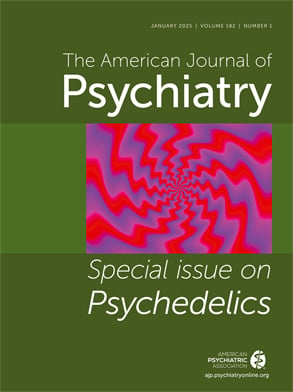This second edition of a classic text is a winner. The authors organize the book around a dozen diagnostic categories and then tailor their formulations and technical recommendations to the special features of each category. Though their focus is on personality types, other chapters address depression, anxiety, psychosis, psychosomatic syndromes, and emergency and hospitalized patients. The authors eloquently explain the crucial importance of understanding psychodynamic factors influencing the onset and course of psychotic illnesses, even though biological factors receive nearly exclusive attention these days.
The many captivating clinical vignettes distill the authors’ clinical expertise, tact, compassion, pragmatism, and admirable literary skill. Trainees in particular will welcome the many suggestions of what to say to patients. The authors help the reader feel confident and even excited about finding opportunities to learn and to help, especially in regard to the clinical dilemmas that are the most intimidating and discouraging for trainees. The seemingly simple, yet immensely important, attitude of showing genuine interest in the patient comes through repeatedly. The authors demonstrate convincingly how many clinical problems tend to be complicated further by the emotional reactions they elicit in the clinician—for example, withdrawing emotionally in response to feeling ineffective or unconnected to the patient; making a premature interpretation out of anxiety; showing condescension toward dependent patients because of conflicts over the clinician’s own dependent feelings; or inhibiting patients from voicing suicidal thoughts because they sense the clinician’s anxiety about the topic.
The chapter on the emergency patient is especially likely to become a favorite of trainees, since it helps the reader focus on the essential tasks in this challenging setting. The authors note that understanding what specific stress led to the emergency is crucial in its management. Readers who perform psychiatric assessments in emergency rooms will especially appreciate their approach to suicidality, which helps teach students how to assess this risk without being unduly anxious about it.
In their chapter on cultural factors, the authors’ clinical wisdom comes across in their many practical suggestions of how to approach patients whose sexual orientation or social, religious, ethnic, or racial background differs from that of the clinician. The authors astutely note that “the patient is expert about his internal world; the clinician’s interest, curiosity, and lack of prejudice facilitates the exploration of how the patient fits into the world and what specific challenges he experiences” (p. 543). They warn that clinicians may overidentify with someone from their own background and overlook the extent of their psychopathology. Despite the authors’ consistent empathy for a wide range of people, they write as though psychiatric residents are the book’s only readers. Yet they state in their preface, with justifiable pride, that many of the 95,000 copies that their first edition sold were purchased by a wide variety of mental health professionals. In subsequent printings of this text, they might write more inclusively.
There are a few shortcomings in this splendid book. The chapter on the traumatized patient is inexplicably cursory. Throughout the book, the authors do not do justice to the crucial topic of trauma. They show no awareness of the trauma-related diagnosis of dissociative identity disorder, even when a clinician does not recognize a patient at the second visit “because he or she seems like an entirely different person” (p. 333). Although many of their discussions of differential diagnosis are comprehensive and astute, dissociative identity disorder is never mentioned, when it should be part of the differential diagnosis of many of the syndromes they explore (including for borderline, hysterical, depressed, and traumatized patients). The book could be even richer had the authors surveyed a wider range of the relevant literature. Their chapter on depression, for example, might have included Blatt’s well-documented distinction between introjective and anaclitic depression
(1), which has substantial treatment and prognostic implications.
The account of psychotherapy is restricted primarily to insight-oriented approaches (a supportive approach is advised in some circumstances). The authors excel in showing the indications for and adaptations of these approaches in a wide range of patients. However, they tend to fall back too frequently on the concept of resistance (the index lists 37 subcategories of it!). Rather than assume that the patient’s failure to benefit from the clinician’s interventions is a sign of resistance, the reader is advised to turn to texts such as those by Peebles-Kleiger
(2) and McWilliams
(3) for further guidance on how to assess and accommodate the patient’s strengths and deficits.
We hope this excellent text will help restore the era of its first edition, when psychiatrists were expected to have expertise in psychodynamic treatment. It is encouraging to think that today’s trainees in all mental health fields will benefit from this book as much as their forebears did from the first edition.

